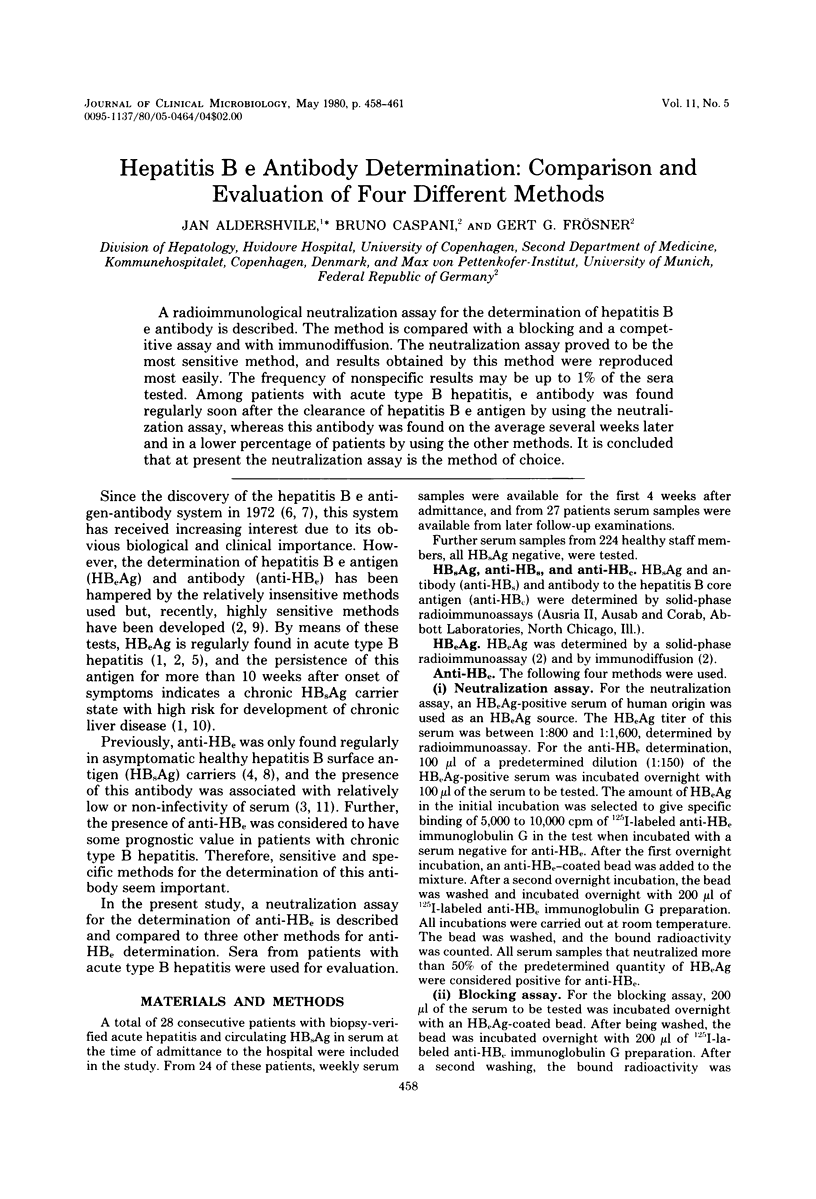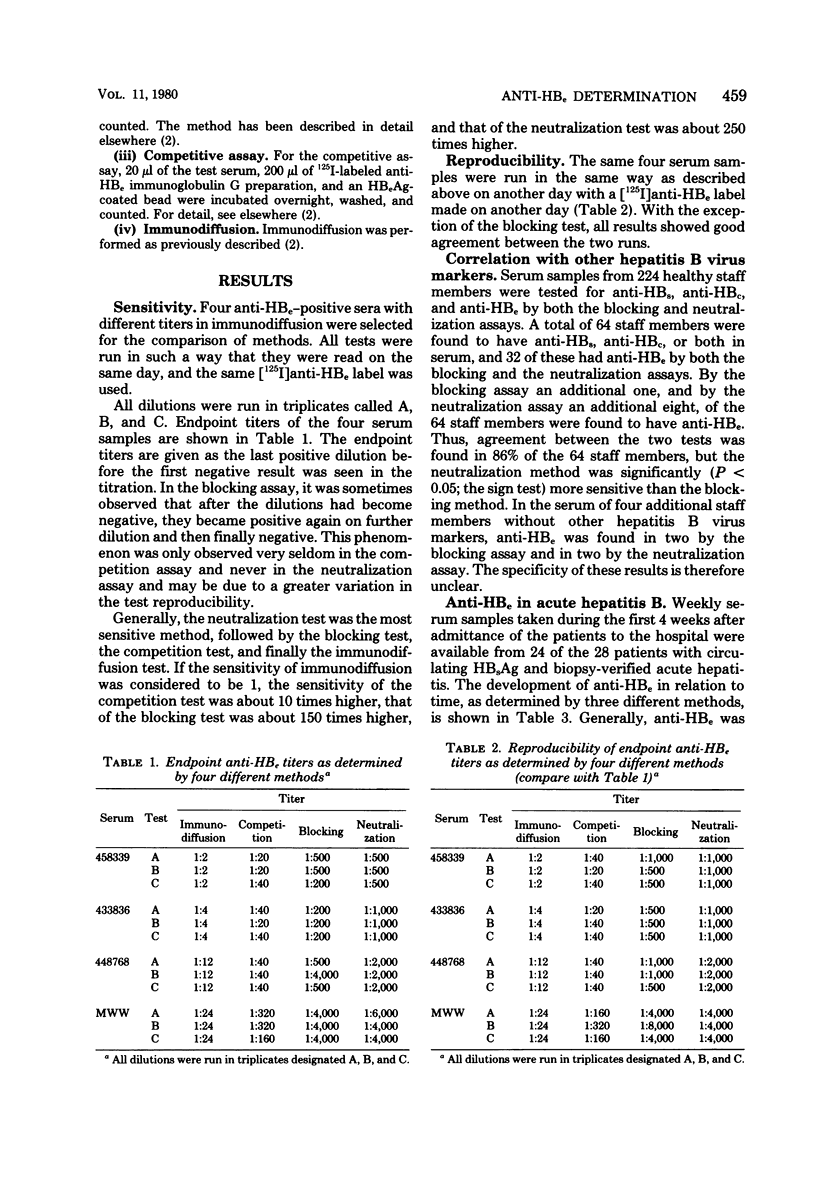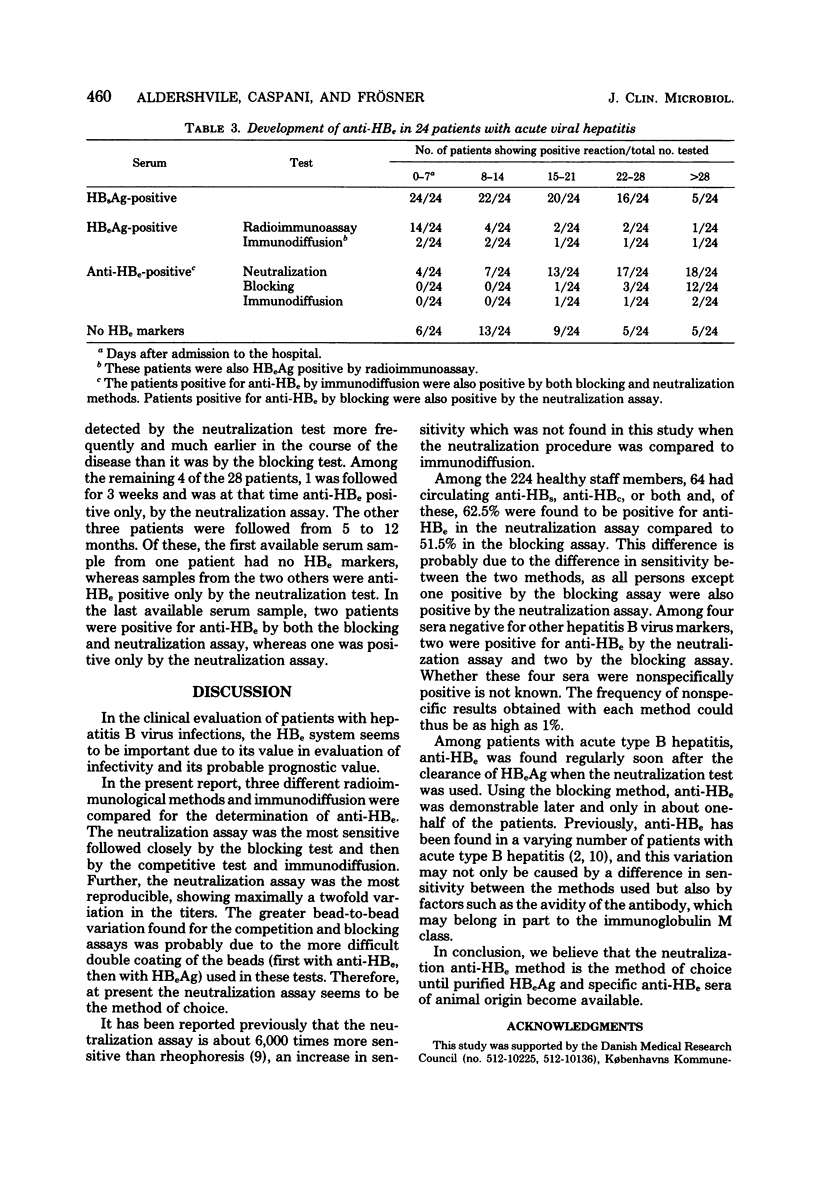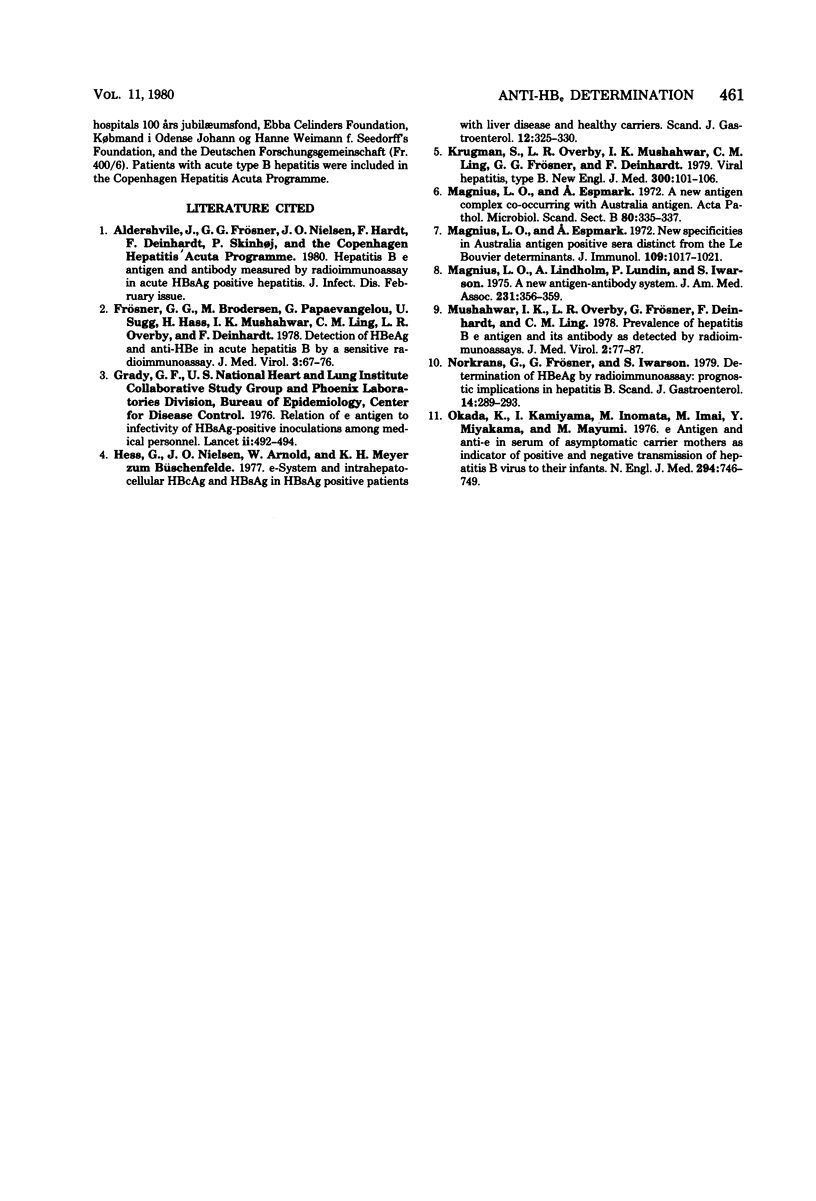Abstract
A radioimmunological neutralization assay for the determination of hepatitis B e antibody is described. The method is compared with a blocking and a competitive assay and with immunodiffusion. The neutralization assay proved to be the most sensitive method, and results obtained by this method were reproduced most easily. The frequency of nonspecific results may be up to 1% of the sera tested. Among patients with acute type B hepatitis, e antibody was found regularly soon after the clearance of hepatitis B e antigen by using the neutralization assay, whereas this antibody was found on the average several weeks later and in a lower percentage of patients by using the other methods. It is concluded that at present the neutralization assay is the method of choice.
Full text
PDF



Selected References
These references are in PubMed. This may not be the complete list of references from this article.
- Frösner G. G., Brodersen M., Papaevangelou G., Sugg U., Haas H., Mushahwar I. K., Ling C. M., Overby L. R., Deinhardt F. Detection of HBeAg and anti-HBe in acute hepatitis B by a sensitive radioimmunoassay. J Med Virol. 1978;3(1):67–76. doi: 10.1002/jmv.1890030114. [DOI] [PubMed] [Google Scholar]
- Krugman S., Overby L. R., Mushahwar I. K., Ling C. M., Frösner G. G., Deinhardt F. Viral hepatitis, type B. Studies on natural history and prevention re-examined. N Engl J Med. 1979 Jan 18;300(3):101–106. doi: 10.1056/NEJM197901183000301. [DOI] [PubMed] [Google Scholar]
- Magnius L. O., Espmark A. A new antigen complex co-occurring with Australia antigen. Acta Pathol Microbiol Scand B Microbiol Immunol. 1972;80(2):335–337. doi: 10.1111/j.1699-0463.1972.tb00167.x. [DOI] [PubMed] [Google Scholar]
- Magnius L. O., Espmark J. A. New specificities in Australia antigen positive sera distinct from the Le Bouvier determinants. J Immunol. 1972 Nov;109(5):1017–1021. [PubMed] [Google Scholar]
- Magnius L. O., Lindholm A., Lundin P., Iwarson S. A new antigen-antibody system. Clinical significance in long-term carriers of hepatitis B surface antigen. JAMA. 1975 Jan 27;231(4):356–359. doi: 10.1001/jama.231.4.356. [DOI] [PubMed] [Google Scholar]
- Mushahwar I. K., Overby L. R., Frosner G., Deinhardt F., Ling C. M. Prevalence of hepatitis B e antigen and its antibody as detected by radioimmunoassays. J Med Virol. 1978;2(2):77–87. doi: 10.1002/jmv.1890020202. [DOI] [PubMed] [Google Scholar]
- Norkrans G., Frösner G., Iwarson S. Determination of HBeAg by radioimmunoassay: prognostic implications in hepatitis B. Scand J Gastroenterol. 1979;14(3):289–293. doi: 10.3109/00365527909179885. [DOI] [PubMed] [Google Scholar]
- Okada K., Kamiyama I., Inomata M., Imai M., Miyakawa Y. e antigen and anti-e in the serum of asymptomatic carrier mothers as indicators of positive and negative transmission of hepatitis B virus to their infants. N Engl J Med. 1976 Apr 1;294(14):746–749. doi: 10.1056/NEJM197604012941402. [DOI] [PubMed] [Google Scholar]


